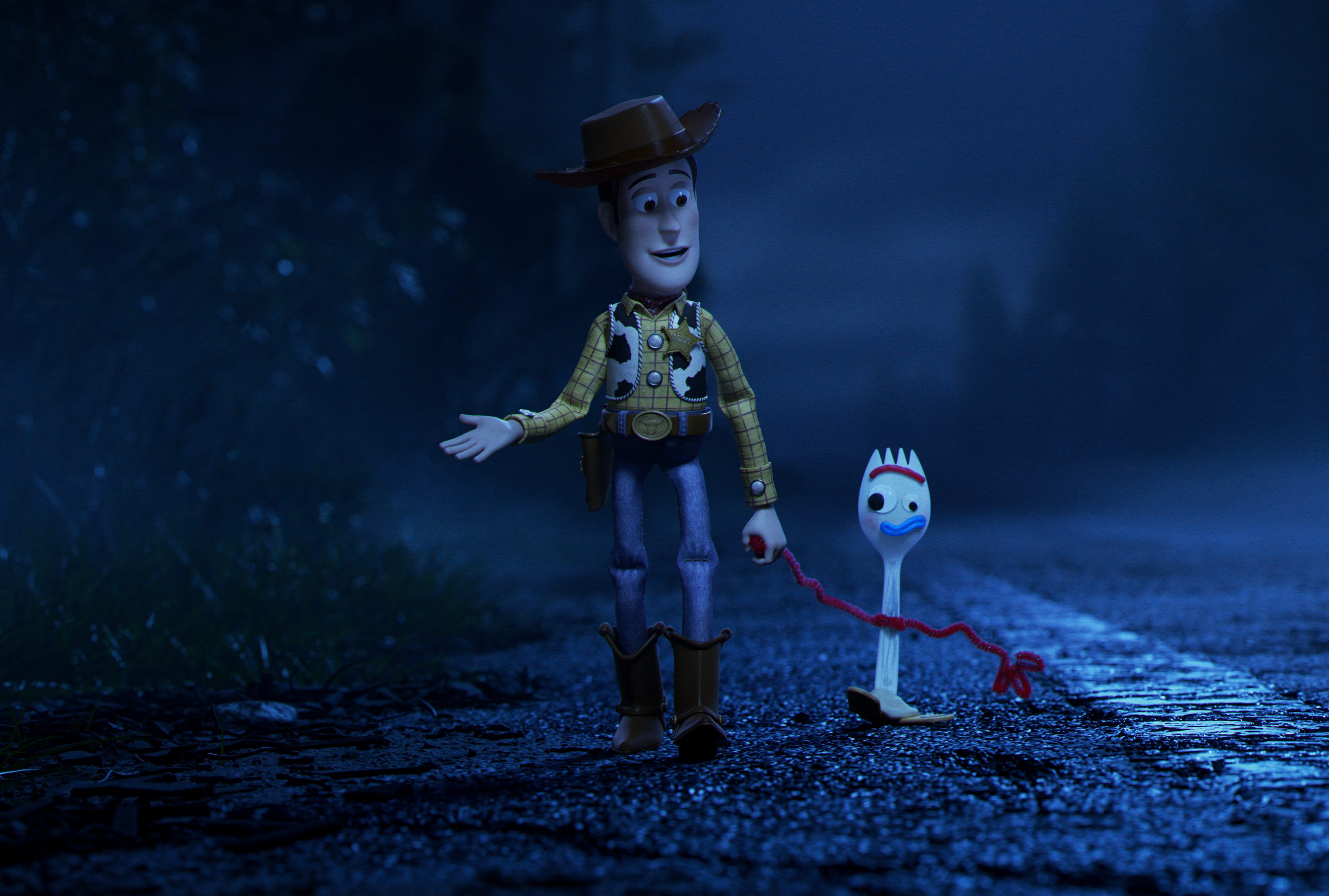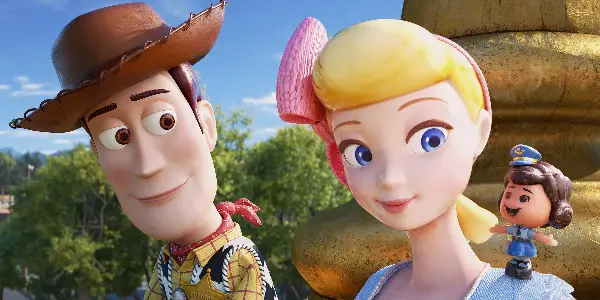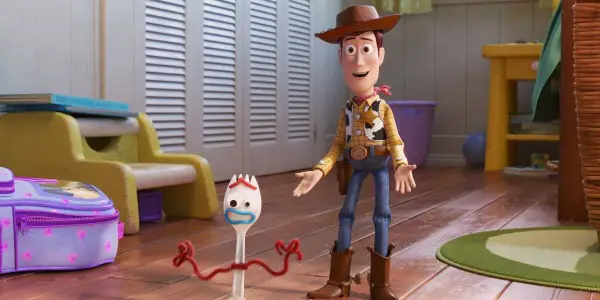TOY STORY 4: The Best Toy Story Sequel Yet

Alistair is a 25 year old writer based in Cambridge.…
It has almost been five years since the world let out a collective groan at the announcement that Toy Story 4 had entered the earliest stages of production. The original trilogy held such a lofty place in the hearts of many, with 2010’s Toy Story 3 being unanimously praised (including by the film’s detractors) for offering a perfect ending to the saga. Was this just Disney preparing to milk more money from what was, at the time, the only Pixar movie to have crossed the billion dollar mark, overlooking the factor that made it such a special event in the first place?
Less than five minutes into Toy Story 4, any fears that this was an unnecessary retread that would destroy the impact of the previous film’s closing moments are vanquished. All the Toy Story films are uniquely fixated on the relationship between a toy and its owner, and how that changes over time, examined from a variety of different angles – and arguably, the big triumph of Josh Cooley’s sequel is how there is still a new way to contextualise this relationship, even after the supposed finality of the previous chapter.
This is No Lazy Cash Grab
The original film’s success is likely due to the simple, ingenious premise: discovering what a child’s toys really get up to when their owner isn’t in the room. After three films exploring the relationship between toy and owner, Toy Story 4 doubles down on the existentialism of being a plaything only hinted at previously, all within a smaller scale story that treats the relationships between the toys (as opposed to their need to be with their owner) as the biggest undercurrent of the drama.
If Toy Story 3 wasn’t afraid to go to dark places to address the fear of becoming obsolete, then this fourth film drops the emotional manipulation in its exploration of what happens to toys when they’re no longer needed by their owners. In fact, the expected adventure mission of the toys attempting to reunite with their owner after being stranded becomes more of a McGuffin than ever in how it becomes overshadowed by the surprising levels of introspection. Rather than being an unnecessary sequel, it’s the most mature film in the franchise to date.

The story opens with a prologue set nine years previously, when the gang are still owned by Andy. On a mission to save RC from falling down the drain in a rainstorm outside, they miss Bo Peep getting boxed and sent away, as Andy’s sister no longer wants her. Flashing forward to the present, roughly two years after Toy Story 3 when the toys are now all owned by Bonnie, and Woody (Tom Hanks) is concerned about her welfare as she starts kindergarten. Sneaking in her backpack to offer support as she’s scared and alone at her new surroundings, Woody inadvertently gives the tools to create a new toy: Forky (Tony Hale). Unexpectedly, Forky quickly becomes Bonnie’s new favourite toy, even though to the other toys, he’s a talking spork whose only desire in life is the nihilistic wish of getting thrown into the trash.
As Bonnie and her family head off on a road trip, Forky frequently attempts to throw himself overboard to the nearest bin, with Woody taking it upon himself to make sure Bonnie’s new favourite toy doesn’t run away. After he jumps out of their motorhome, Woody follows – but even as he convinces Forky of his new purpose in life, their simple mission to make it back to Bonnie by morning gets complicated when Woody thinks he sees Bo Peep in an antiques store. Sneaking in, they find the place is run by sinister ventriloquist dummies and a 50’s doll named Gabby Gabby (Christina Hendricks), who wants to take Woody’s mint condition voice box so she can finally find an owner. In their attempts to flee, Forky gets held as a ransom, and Woody goes rogue looking for help to free him and return to Bonnie.
One of Pixar’s More Emotionally Restrained Outings
If the original trilogy was focused on how toys can struggle to hold a place in a child’s heart as they grow up, seeing that theme to its natural conclusion as it restarted the cycle of ownership, then it’s easy to assume that Toy Story 4 would retread familiar ground after that relationship returned to square one. The threat of being a discarded toy, whose life has no meaning if existing without an owner to play with them, has long loomed over the franchise. Rather than once again utilising this as the lofty dramatic stakes, screenwriters Stephany Folsom and Andrew Stanton choose to look at this from a more existential perspective, refraining from rehashing the specifically misrerabilist mindset of the prior films.

Forky may be more of a fun comic sidekick (arguably, even a McGuffin in his own right) than the major character he’s being marketed as, but his fear of existing with a larger purpose is what sets this existentialist theme in motion, his desire to exist on his own terms instead of bringing joy to others slowly awakening a deeper longing for happiness by Woody, who doesn’t get played with as much as he used to. It’s less emotional and more overtly comedic than the two prior sequels, but one that feels surprisingly richer for it.
Here, Pixar proves that they can explore weightier topics in child friendly entertainment, without resorting to their tried and tested methods of making the audience lapse into puddles of tears. By applying this depth to a fun adventure story (albeit their smallest scale one to date, taking place almost entirely in an antiques shop and the funfair across the road), they’re also delivering the thrills that have been so illusive in this disappointing summer blockbuster season.
It should also be mentioned that the significant gaps in-between each Toy Story movie help to illustrate the gigantic leaps in animated achievement through the different eras. As the first CG animated film, 1995’s Toy Story won over millions with its story, but watched on any high res transfer today, the cracks in its design (particularly that of the human characters) are nakedly apparent.
Flash forward to 2019, and Toy Story 4 is an abundance of visual riches, thoroughly demonstrating the tactility of the toys in a way previous films couldn’t – and yes, that’s including the one where Woody lost his arm. Here, Woody’s squishy foam head is accentuated more than before, contrasting with the polished shine of Bo Peep’s face, this added depth to the stylisations of existing characters proving to be somewhat ironic in a film where the most prominent new figure is a talking spork.
Toy Story 4: Conclusion
Toy Story 4 is the finest of the Toy Story sequels, and most remarkably, the most emotionally restrained to boot. Prioritising broad laughs and quiet introspection over forcibly tugging at the audience’s heartstrings, Pixar have created another near-perfect family film while ever so slightly deviating from their expected formula. If this is the start to a second trilogy, then based on what I’ve seen here, I’ll follow it to infinity and beyond.
Toy Story 4 will be released in the UK and US on June 21, 2019.
Does content like this matter to you?
Become a Member and support film journalism. Unlock access to all of Film Inquiry`s great articles. Join a community of like-minded readers who are passionate about cinema - get access to our private members Network, give back to independent filmmakers, and more.
Alistair is a 25 year old writer based in Cambridge. He has been writing about film since the start of 2014, and in addition to Film Inquiry, regularly contributes to Gay Essential and The Digital Fix, with additional bylines in Film Stories, the BFI and Vague Visages. Because of his work for Film Inquiry, he is a recognised member of GALECA, the Gay & Lesbian Entertainment Critics' Association.













